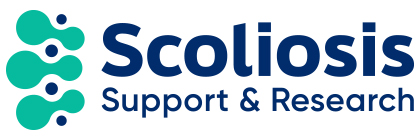Lead Researcher:
Dr Lisa Graham-Wisener & Dr Paul Toner
Institution:
Queen’s University Belfast
Aims
This study aims to engage with patients with spinal deformity, family members and healthcare professionals to generate a comprehensive and meaningful long list of candidate outcome domains for spinal surgery. A methodologically robust, capacity building approach will be taken in the development of an internationally applicable person-centred core outcome set.
Summary
A COS for surgical treatment of spinal deformity in AYA is essential to ensure that appropriate outcomes are evaluated consistently [5], facilitating high-quality trials of less invasive surgical techniques (PSP Priority 3,[6]) and informing the routine collection of clinical data within the British Spine Registry. It is important to include a diverse range of key stakeholders in COS development, in recognition of what constitutes a successful outcome and the meaning attributed to an outcome can vary between healthcare professionals (HCPs) and that HCPs may overlook outcomes which are important to patient/family representatives [7;8;9;10;11].
This study will utilise an inductive approach involving qualitative methods with a diverse range of key stakeholders (HCPs, patients and family members) to generate a comprehensive list of potential core outcome domains (CODs); constructs used to classify broad aspects of the effects of intervention [1]. This is a crucial process to ensure all potential domains are identified to robustly inform a subsequent Delphi study. It is acknowledged that stakeholders often identify potential CODs which would not be captured with an evidence review, as with the existing COS [2].
Additionally, qualitative research informs the understanding of i) not only which outcomes are important but why they are important ii) the scope of the outcome and iii) how and why an understanding of successful outcomes may vary across stakeholder groups [12;13]. The study aims to address PSP Priority 2 [6] towards ensuring outcomes are measured in ways that are meaningful to patients, and in doing so will add to the limited understanding of surgery as experienced by AYA and family members [14].
Semi-structured interviews (n=30-40,until data saturation) will be undertaken with AYA with spinal deformity in the UK. The sampling frame will include AYA (10-25 years) who have received surgical intervention for spinal, with exclusion criteria of deformity secondary to other disease/disorder/syndrome and as a result of trauma. Maximum variation sampling will be conducted to achieve an appropriately diverse sample [12]. For participants <16 years, informed consent will be sought from the parent/guardian and informed assent from the young person [15].
Semi-structured interviews with family members (n=10-15) and HCPs (n=10-15) will adopt the same approach. Content analysis [16] will provide counts for outcomes endorsed, and preferred phraseology for descriptors.
Thematic analysis [17] will generate list and descriptor content from open-ended responses. Convergence/ divergence will be explored across samples.
Two young people’s advisory groups (YPAG) will be established (n=16 patients), with invitation via the Scoliosis Association membership. One including young people (age 10-15) and parents, and a young adult group (age
16-25). The YPAG will inform research design, and will engage in two structured workshops after data collection is complete. Workshop 1 aims to identify additional potential CODs from i) the systematic review forming the basis for existing COS [2] and ii) existing qualitative studies identified in meta-synthesis [14], with subsequent consolidation of the long list [18]. Workshop 2 aims to engage the YPAG in developing meaningful and age-appropriate plain language definitions for the long list of potential CODs.
